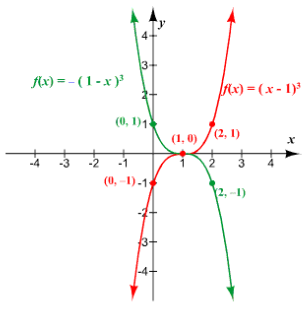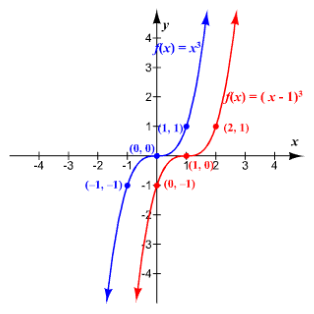Problem 1RE: In Problems 14, determine whether the function is a polynomial function, a rational function, or... Problem 2RE: In Problems 14, determine whether the function is a polynomial function, a rational function, or... Problem 3RE: In Problems 14, determine whether the function is a polynomial function, a rational function, or... Problem 4RE: In Problems 14, determine whether the function is a polynomial function, a rational function, or... Problem 5RE: In Problems , graph each function using transformation(shifting, compressing, stretching, and... Problem 6RE Problem 7RE Problem 8RE Problem 9RE Problem 10RE Problem 11RE Problem 12RE Problem 13RE Problem 14RE Problem 15RE Problem 16RE Problem 17RE Problem 18RE Problem 19RE: In Problems 1214, find the domain of each rational function. Find any horizontal, vertical, or... Problem 20RE: In Problems 1214, find the domain of each rational function. Find any horizontal, vertical, or... Problem 21RE: In Problems , find the domain of each rational function. Find any horizontal, vertical, or oblique... Problem 22RE Problem 23RE: In Problems 1520, graph each rational function following the seven steps on page 211. R(x)=2x6x Problem 24RE Problem 25RE Problem 26RE Problem 27RE Problem 28RE Problem 29RE Problem 30RE Problem 31RE Problem 32RE Problem 33RE Problem 34RE Problem 35RE Problem 36RE Problem 37RE Problem 38RE Problem 39RE Problem 40RE Problem 41RE Problem 42RE Problem 43RE Problem 44RE Problem 45RE Problem 46RE Problem 47RE Problem 48RE Problem 49RE Problem 50RE Problem 51RE Problem 52RE Problem 53RE Problem 54RE Problem 55RE Problem 56RE Problem 57RE Problem 58RE Problem 59RE Problem 60RE Problem 61RE Problem 62RE Problem 63RE Problem 64RE Problem 65RE Problem 66RE Problem 67RE Problem 68RE Problem 69RE Problem 70RE Problem 71RE Problem 72RE Problem 73RE Problem 74RE Problem 75RE Problem 76RE Problem 77RE Problem 78RE Problem 79RE Problem 80RE Problem 81RE Problem 82RE Problem 83RE Problem 84RE Problem 85RE Problem 86RE Problem 87RE Problem 88RE Problem 89RE Problem 90RE Problem 91RE Problem 1CT: Graph f(x)=(x3)42 using transformations. Problem 2CT: For the polynomial function ,
Determine the maximum number of real zeros that the function may... Problem 3CT: Find the complex zeros of f(x)=x34x2+25x100. Problem 4CT: Solve in the complex number system.
Problem 5CT: In problems 5 and 6, find the domain of each function. Find any horizontal, vertical, or oblique... Problem 6CT: In problems and , find the domain of each function. Find any horizontal, vertical, or oblique... Problem 7CT: Graph the function in Problem 6. Label all intercepts, vertical asymptotes, horizontal asymptotes,... Problem 8CT: In Problems 8 and 9, write a function that meets the given condition. Fourth degree polynomial with... Problem 9CT: Rational function; asymptotes: , ; domain :
Problem 10CT: Use the Intermediate Value Theorem to show that the function has at least one zero on the interval... Problem 11CT: Solve:
Problem 1CR: Find the distance between the points and .
Problem 2CR: Solve the inequality x2x and graph the solution set. Problem 3CR: Solve the inequality x23x4 and graph the solution set. Problem 4CR: Find a linear function with slope 3 that contains the point (1,4). Graph the function. Problem 5CR: Find the equation of the line parallel to the line and consisting the point. Express your answer... Problem 6CR: Graph the equation.
Problem 7CR: Does the relation {(3, 6), (1, 3), (2, 5), (3, 8)} represent a function? Why or why not? Problem 8CR: Solve the equation x36x2+8x=0. Problem 9CR: Solve the inequality 3x+25x1 and graph the solution set. Problem 10CR Problem 11CR: For the equation y=x39x, determine the intercepts and test for symmetry. Problem 12CR: Find the equation of the line perpendicular to that contains the point.
Problem 13CR: Is the following the graph of a function? Why or why not? Problem 14CR: For the function f(x)=x2+5x2, find f(3) f(x) f(x) f(3x) f(x+h)f(x)h, h0 Problem 15CR: Given the function f(x)=x+5x1 What is the domain of f? Is the point (2,6) on the graph of f? If x=3,... Problem 16CR: Graph the function f(x)=3x+7. Problem 17CR: Graph f(x)=2x24x+1 by determining whether its graph is concave up or concave down and by finding its... Problem 18CR: Find the average rate of change of from to . Use this result to find the equation of the secant... Problem 19CR: In parts (a) to (f), use the following graph, Find the intercepts Based on the graph, tell whether... Problem 20CR: Determine algebraically whether the function f(x)=5xx29 is even, odd, or neither. Problem 21CR: For the function
Find the domain of .
Locate any intercepts.
Graph the function.
Based on the... Problem 22CR: Graph the function f(x)=3(x+1)2+5 using transformations. Problem 23CR: Suppose that and .
Find and state its domain.
Find and its domain.
Problem 24CR: Demand Equation The price (in dollars) and the quantity sold of certain product obey the demand... format_list_bulleted





 Calculus: Early TranscendentalsCalculusISBN:9781285741550Author:James StewartPublisher:Cengage Learning
Calculus: Early TranscendentalsCalculusISBN:9781285741550Author:James StewartPublisher:Cengage Learning Thomas' Calculus (14th Edition)CalculusISBN:9780134438986Author:Joel R. Hass, Christopher E. Heil, Maurice D. WeirPublisher:PEARSON
Thomas' Calculus (14th Edition)CalculusISBN:9780134438986Author:Joel R. Hass, Christopher E. Heil, Maurice D. WeirPublisher:PEARSON Calculus: Early Transcendentals (3rd Edition)CalculusISBN:9780134763644Author:William L. Briggs, Lyle Cochran, Bernard Gillett, Eric SchulzPublisher:PEARSON
Calculus: Early Transcendentals (3rd Edition)CalculusISBN:9780134763644Author:William L. Briggs, Lyle Cochran, Bernard Gillett, Eric SchulzPublisher:PEARSON Calculus: Early TranscendentalsCalculusISBN:9781319050740Author:Jon Rogawski, Colin Adams, Robert FranzosaPublisher:W. H. Freeman
Calculus: Early TranscendentalsCalculusISBN:9781319050740Author:Jon Rogawski, Colin Adams, Robert FranzosaPublisher:W. H. Freeman
 Calculus: Early Transcendental FunctionsCalculusISBN:9781337552516Author:Ron Larson, Bruce H. EdwardsPublisher:Cengage Learning
Calculus: Early Transcendental FunctionsCalculusISBN:9781337552516Author:Ron Larson, Bruce H. EdwardsPublisher:Cengage Learning




